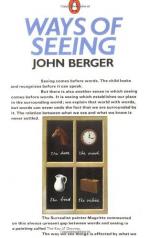|
This section contains 499 words (approx. 2 pages at 300 words per page) |

|
Perception is a creation of the brain that goes beyond the input of sense organs. Sense organs detect changes in the environment, and transmit the information as nerve impulses or action potentials. Sensory neurons carry the action potentials to the brain. The name, sensation, is given to an action potential traveling from a sense organs to the brain. Sensations from different sense organs travel to different parts of the brain. When sensations reach their brain centers, the brain interprets them and produces a perception. In this way, we perceive the difference between sight and sound. Using memory, we also make perceptual inferences about the world around us. For example, when we see a moving car consistently getting larger, we determine that it is coming toward us. By means of a complex process, the brain extracts features such as color, motion, and orientation from sensations in order to create...
|
This section contains 499 words (approx. 2 pages at 300 words per page) |

|


